The Cycladic island of Amorgos, which gained international attention through the film The Big Blue, has long attracted visitors with its stunning nature and rich history.
The following text is a slightly revised version of an article by journalist Dimitris Hatzis from 2010, originally published in the magazine Εναλλακτικός Τουρισμός/Alternative Tourism. The text serves as a valuable historical document, capturing the soul of Amorgos at that time. Unfortunately, the magazine was discontinued in 2011 due to the Greek economic crisis.
Several people mentioned in the text are no longer with us, but their memory lives on – both on the island and in the hearts of all who knew them.
By Dimitris Hatzis, journalist
Photos by Zois Louvaris, Georgios Xyftilis, Ulf Björkman
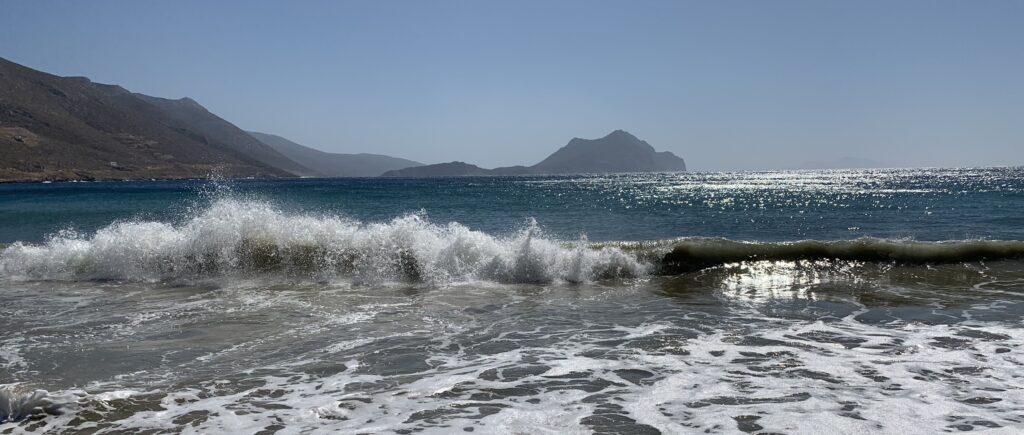
The Cyclades slowly fade into the distance. From the Blue Star ferry deck, I watch as the sun sinks below the horizon, painting the sky in enchanting hues. One by one, the islands slip out of sight, quietly renewing their ancient promise to reappear with the first light of dawn, adorning the traveler’s seafaring journey just as they have for millennia.
Amorgos is the last and most remote outpost of the Cyclades. Yet, the island is also one of the most distinctive. What is it about Amorgos that captures your heart and makes it so special and so beloved?
Join us to find out!

Faint at first and growing clearer the closer we came, Amorgos emerged from the blue light of the Aegean Sea. It was a massive, granite-like formation, a long, narrow mountainous island, so different from all the ones I had encountered before.
Yes, Amorgos gives the impression that some ancient god loved it and chose this very spot to gently place it on the sea. The island, with its beauty and welcoming embrace, generously offers the tenderness and joy needed for those who have traveled so far and faced many challenges to reach it.
Getting to know Amorgos
My visit to Amorgos allowed me to experience the island from The Big Blue during its best time of year, lush, blooming, and fragrant.
The blooming meadows, the beautiful mountain slopes, the steep peaks, the picturesque villages, the endless sandy beaches, and all around the intense blue sea create a scene that instantly captures your heart and ignites a desire to explore further—to discover the island’s world, its customs, traditions, and way of life.
It is the largest island among the island group known as the Small Cyclades, a favorite of many artists, poets, and other seekers and inspired individuals. A hospitable island where the grandeur of nature’s beauty harmoniously blends with the traditional lifestyle of its inhabitants, making it a unique destination for every traveler.
But even the flavors and melodies of Amorgos enchant the visitor. The festivities, along with the meze dishes, local wine, and raki, create the setting for entirely new experiences. The traditional drink rakomelo (warm raki with honey) might leave you “inebriated by the Big Blue.” Those who have experienced it know exactly what I mean.
Amorgos – a historical overview
Amorgos has been inhabited since ancient times. The Cycladic and Mycenaean civilizations have left their mark, which visitors can discover among the ruins of the ancient cities of Minoa, Arkesini, and Aigiali (Melania).
The island was colonized by inhabitants from Miletus and Naxos and participated in the First Athenian League. Control of Amorgos then passed to the Macedonians and later to the Ptolemies and Romans, until the Christianization of the island under Byzantine rule. The renowned Monastery of Panagia Chozoviotissa was founded in 1088 by Emperor Alexios I Komnenos and symbolizes the Byzantines’ long-standing presence on the island before Venetian and later Ottoman rule took over.
The villages of Amorgos
Chora
Around the hill with the windmills, built in a distinctly Cycladic style, lies Chora, the island’s main village, just one kilometer from Katapola, the port on the island’s southern side.
All of the picturesque cobblestone alleys lead to the central square, Loza, and the historic castle in Chora. It’s also worth visiting the archaeological collection at the Gavras Mansion, the small Fotodotis Christ Monastery, and the many whitewashed churches, such as Metropolis, Agioi Pantes, Vlysani, and several others.

Near Chora lies the renowned Monastery of Panagia Chozoviotissa, as well as the smaller Monastery of Agios Georgios Valsamitis and the famous Agia Anna beach, where parts of The Big Blue were filmed.
Katapola
Katapola is a wind-sheltered, safe, and natural harbor favored by many yachts and small boats that visit the area. The churches of Panagia Katapoliani and the Church of the Annunciation are of great interest. Above Katapola, you can see the ruins of ancient Minoa and the old dam at Lefkes. For swimming and relaxation, the picturesque beaches of Kato Akrotiri, Maltezi, Finikies, Tyrokomos, and Agioi Saranta are ideal.
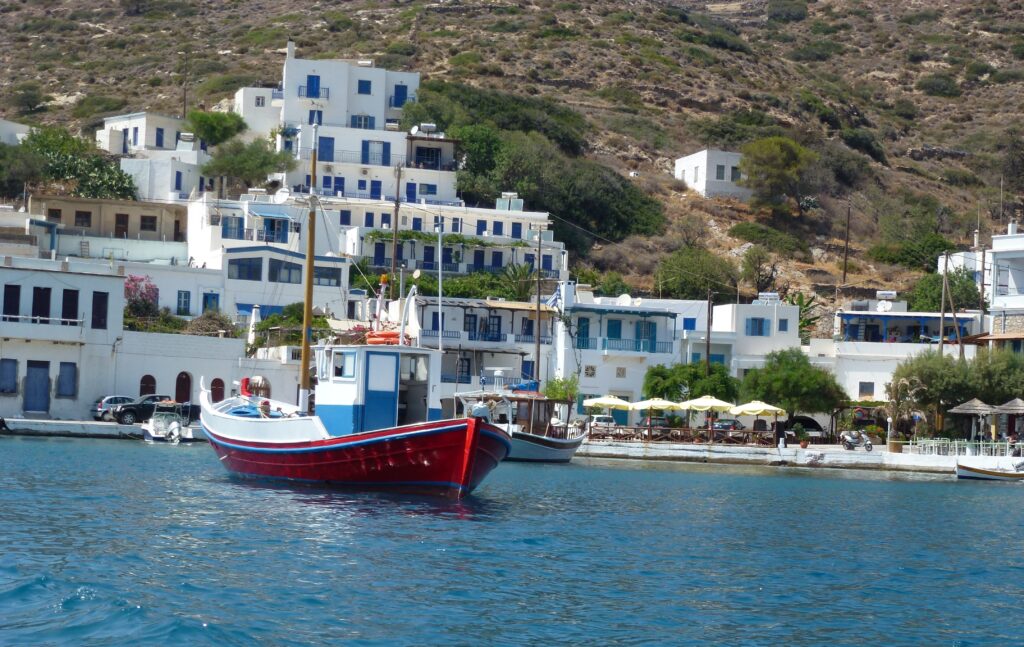
Kato Meria
In the southern part of Amorgos, known as Kato Meria, in addition to the village that gave the area its name, you can also visit the villages Arkesini, Vroutsi, Kolofana, and the stunning beaches of Ammoudi, Mouros, Kalotaritissa, and Paradeisia. Lastly, the small island of Gramvousa lies at the southernmost tip of Amorgos, and you can easily reach it by a small boat.
Aigiali
After crossing the mountain range of Amorgos to the north, a distance of about 10.5 miles, I arrived in Aigiali, the island’s second port. It is a beautiful bay with turquoise waters that enchant the visitor. The port, village, sandy beaches, and the surrounding steep mountains create an impressive view that instantly captures both soul and heart. Many who arrive in Aigiali think, “This is where I want to stay.”

The villages Potamos, Langada, Tholaria
In the steep mountains high above Aigiali lies the village of Potamos, offering an outstanding panoramic view where you can experience one of the most beautiful sunsets in the Aegean Sea.
Langada is one of the most significant villages in the area and is a must-visit. It is located above the cultivated fields of Aigiali and is known for its historic church, Agia Triada, the Araklou Gorge, and the old windmills.
Opposite Langada lies the village of Tholaria, representing the island’s “Spartan” side and offering breathtaking views. Warm and hospitable people will give you a heartfelt welcome to their village. One of the most beautiful cafés in Greece, Kali Kardia (The Good Heart), located next to the main church, will make your heart skip a beat. Sofia, an exceptional individual, and her mother, Mrs. Pletto, will take care of you with the smiles and warmth that define them.
A little further up, Nikolas at the Panorama tavern will sing Amorgian melodies for you, accompanied by his sons, Stamatis on the violin and Paraskevas on the lute.
At the Choreftis (Dancer) café, Anargyros has been trying for years to master the board game tavli. If you know how to play, feel free to challenge him to a game, if you dare.
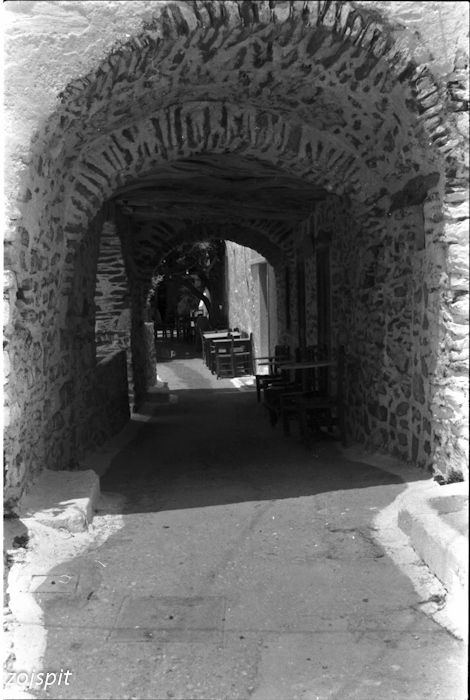
The beaches
The area is home to many beaches, with Levrossos, Psili Ammos, Vlychada, and Agios Pavlos standing out. The latter is located right across from the “guardian” of Aigiali bay, the small island of Nicouria, which stands out with its distinctive shape. There is also the main beach of Aigiali, with its countless love stories, where during magical and dreamlike nights, colorful dawns, and intoxicating moments, so many different people have experienced the same feeling of unrestrained freedom, Dionysian ecstasy, or simply, true life.
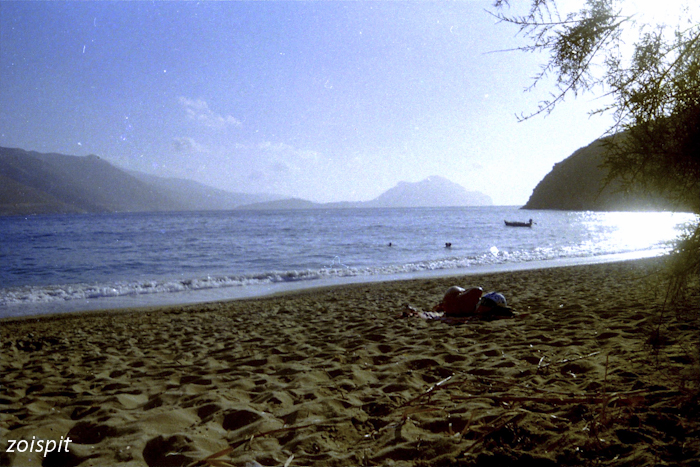
Every part of this endless beach holds something from all those who came to know it before the violent and homogenizing new reality of tourism’s modernization and commercialization swept in. Here, those who know will remember Michalis “Tyri,” Mitsaras with his bouzouki, the crew from the legendary black fishing boat Aldebaran, Nikos Koutis, Georgios “the Swede” and his company, and of course, our beloved kyra-Katina.
Hospitality, tradition, and family warmth
“To Limani tis kyra-Katinas Café and Restaurant” reads the sign outside Aigiali’s most famous restaurant. We spoke with Panagiotis, one of Katina and Antonis Nomikos’ two sons, who, together with his brother Theodoris, runs the place where thousands of visitors each year enjoy authentic Amorgian and Greek cuisine.
The restaurant is deeply associated with Aigiali, and it would not be an exaggeration to say that there isn’t a single visitor to the island who hasn’t been there.
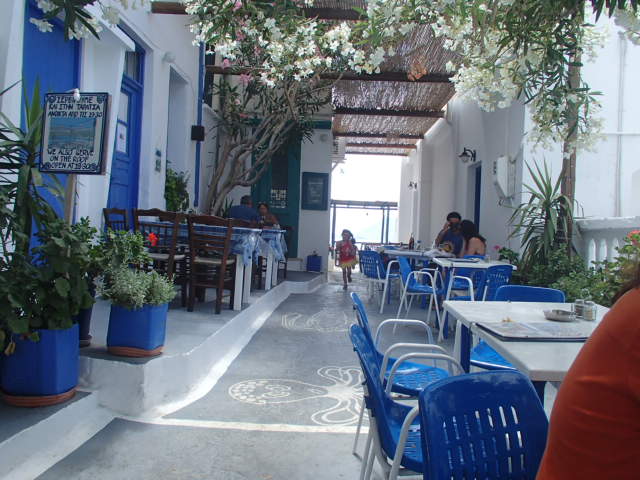
“Tell us, Panagiotis, about the restaurant’s history.”
“The restaurant began its operation in 1980. My father was a cook on boats, and when he retired, we decided to open this restaurant. When we started, there wasn’t even electricity in Aigiali, and we worked with a generator. The food was cooked with gas, and the dishes that needed to be baked in an oven were taken to the village bakery’s oven on trays.”
“People took us to their hearts from the very beginning, perhaps because it was a family business or because my parents were very well-liked. It’s incredibly touching that people have been coming back to us for over 40 years!”
“My wife Lia and I now run the restaurant with my brother Theodoris and his wife Puki. We serve fresh fish and seafood, cheeses, meats, vegetables, and above all, pure, local products. Our goal is to maintain high quality in the food we serve.”
Alternative tourism
I had a pleasant conversation about alternative tourism activities with Vasilis Savvas at the Iris Center for Alternative Vacations, located at the famous tsimentaki, a small seafront walkway where past visitors to the island used to stroll, discuss, and reflect on life.
“When did you decide to settle permanently on Amorgos and work with alternative tourism?”
“I first came to Amorgos in 1982 and worked temporarily as a waiter. In 1992, I decided to settle here permanently, and in my search for something to do on the island, the Iris Center for Alternative Vacations gradually took shape.”
“We started as four people, but today it’s just me and Karin from Sweden who continue to run the center. However, we also have other collaborators. Instructors and teachers from both Greece and abroad come here, as do many visitors, both individually and in groups. They engage in activities like yoga, tai chi, chi gong, dance, astronomy, massage, meditation, and others.”
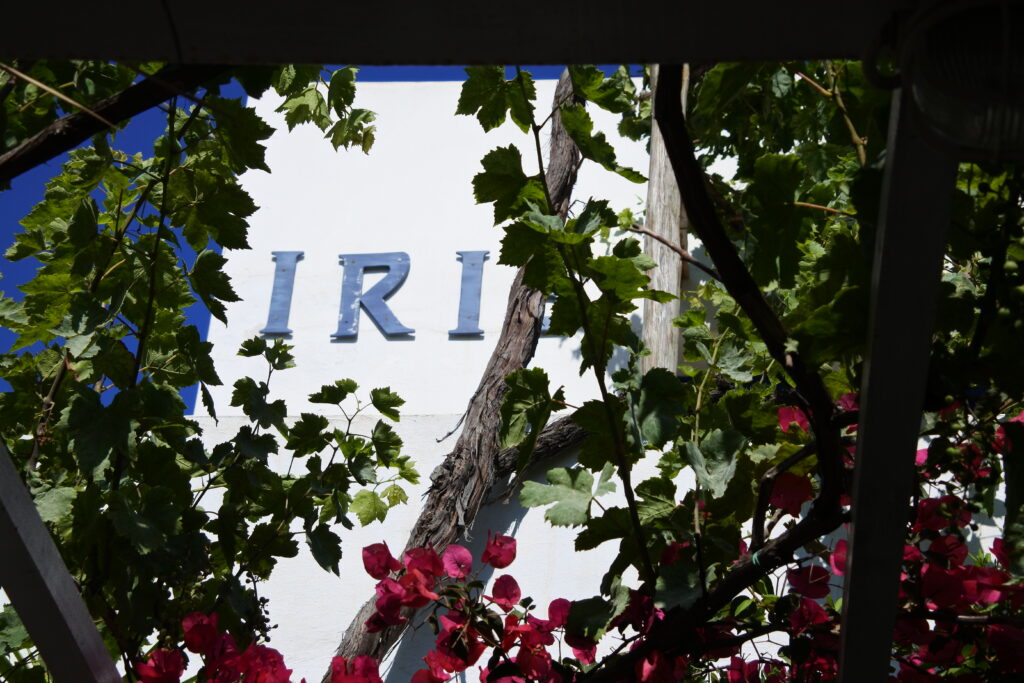
“Amorgos has always been an island that fosters an alternative lifestyle,” Vasilis continues. “It has a special character. Perhaps it’s the magnetism, the energy the island conveys to its visitors. It’s said to lie on one of the Earth’s energy lines, one of the so-called “ley lines,” and that may be why ancient peoples built so many temples and monuments on this island. There was even a famous water oracle in antiquity, in the area where the Monastery of Agios Georgios Valsamitis now stands.”
“What other alternative activities are available on the island?”
“Hiking, getting to know nature, climbing, and diving are some key activities. Additionally, there is a small astronomical observatory.”
Another unique feature of the island is the abundance of herbs with healing properties, which can be found almost everywhere on Amorgos. The island is also home to many migratory birds and small animals. Since the year 2000, the northern part of the island, above Langada and toward Cape Xodontas, has been included in the Natura program and will become a protected area.
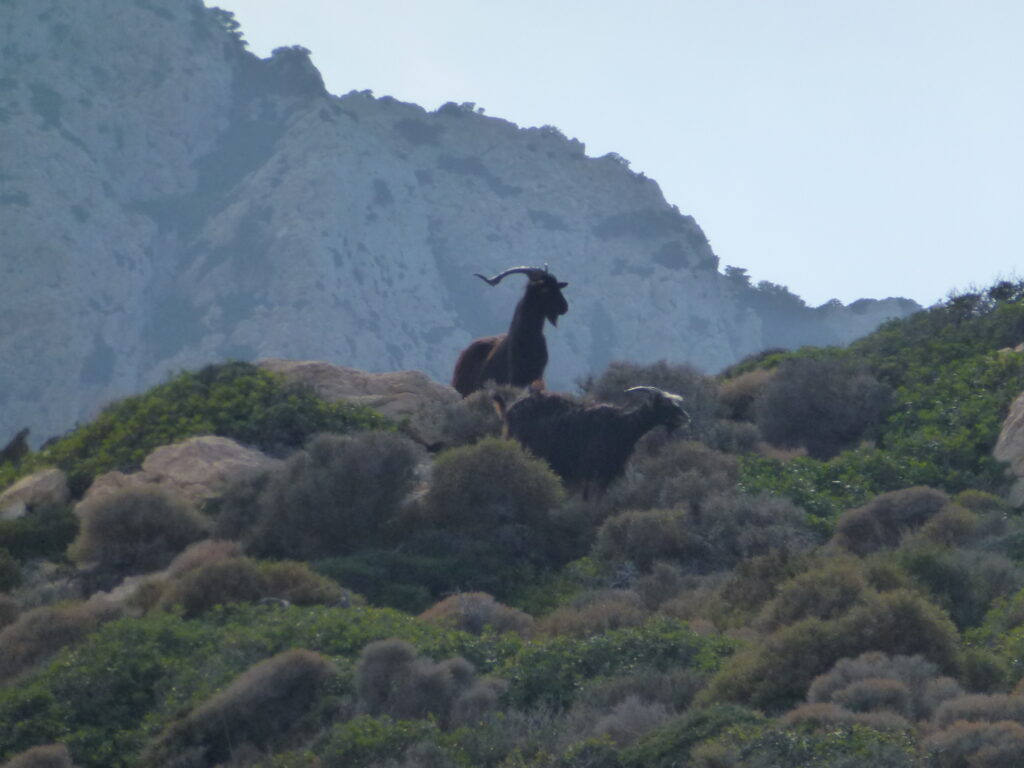
On Amorgos, you can also experience unique festivities with a strong religious, social, and cultural character. During these celebrations, called panigyria, wine and traditional dishes such as xidato and patatato are generously offered. The festivities are always accompanied by traditional music, with local songs and instruments.
Amorgos hiking trails
Amorgos is an island of striking contrasts. Here, mountains and sea are in constant interplay. The towering mountains meet the foaming waves, while lush plains stretch down toward calm bays and beautiful beaches.

Hiking soothes the soul and rewards those who cross the island on stone-paved paths that have been walked for centuries, offering the chance to come into close contact with Amorgos’ nature, its historical monuments, and small villages.
The paths stretch across the entire island, and until the late 1980s, they were the main routes of communication for the inhabitants. Today, some of the main trails have been marked, and a special hiking map has been created.
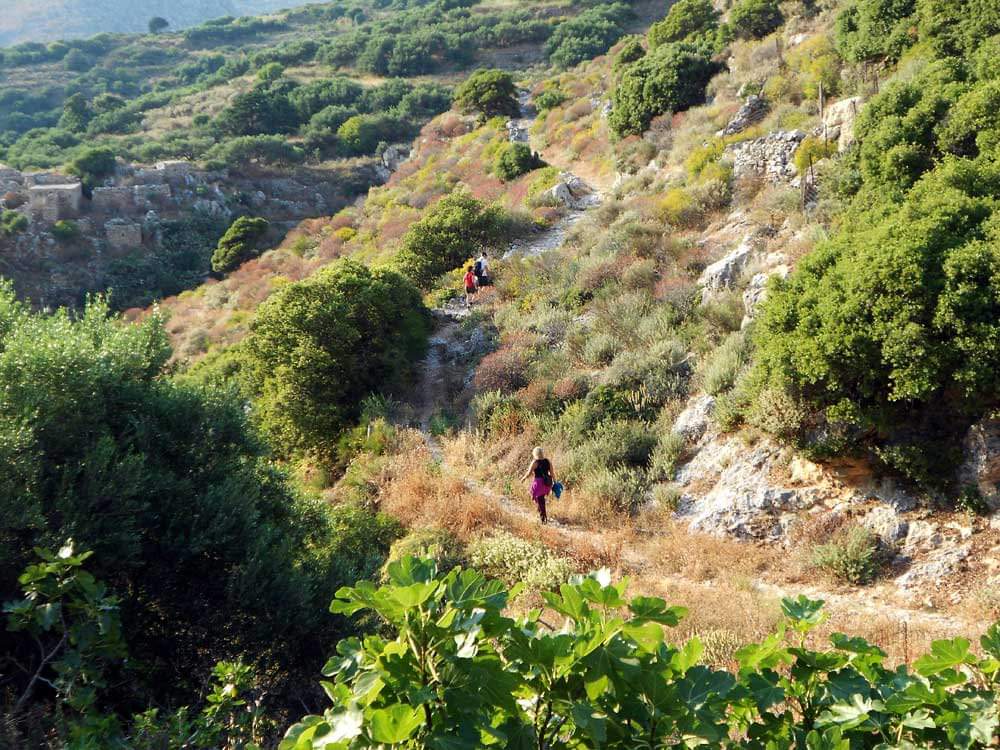
A remarkable journey through time and tradition
Amorgos offers not only breathtaking landscapes and rich traditions but also an enchanting blend of history, culture, and natural experiences. It is a place where every step on the ancient trails, every encounter with the hospitable locals, and every meal made from local ingredients roots you deeper into the island’s unique soul. Whether you seek peace, adventure, or a journey into Greece’s past, Amorgos is a destination that will always surprise and captivate.
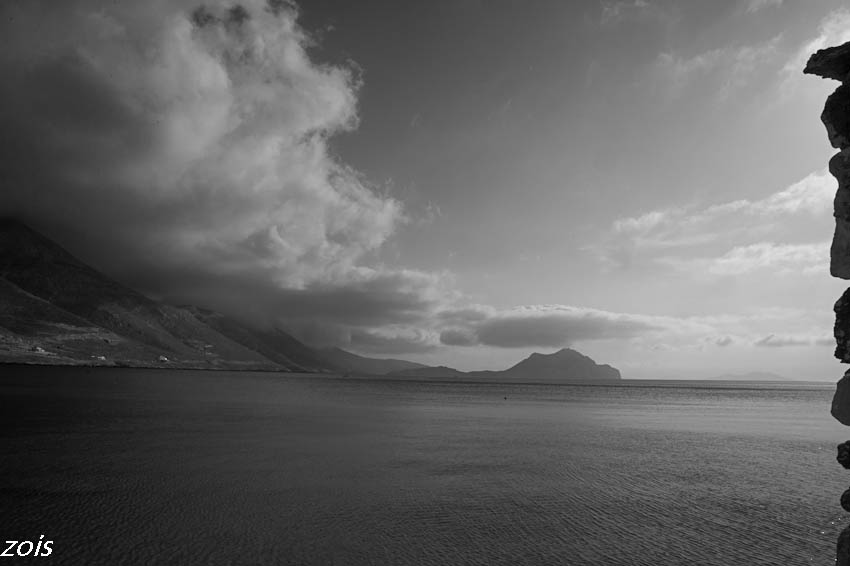
By Dimitris Hatzis, journalist
Photos by: Zois Louvaris, Georgios Xyftilis, Ulf Björkman
Related articles
- Island-hopping in the 1970’s – my carefree Greek roamings part 2
- Island-hopping in the 1970’s – my carefree Greek roamings part 1
Latest articles
- Lesser known attractions in Athens, Part 2
- 2025 – two years abroad the Greek Expedition – new horizons ahead [newsletter]
- Greek Expedition hailed in Greek media as a unique project and a digital “diamond”
- Heraion – a hidden gem on the Gulf of Corinth, where you can swim among ancient ruins
- World Heritage in Greece 2025, complete UNESCO list [updated]
Our guided tours are now ongoing
Embark on a fascinating tour of the unknown Athens and discover some of the lesser-known sights of the city. Read more 👇
